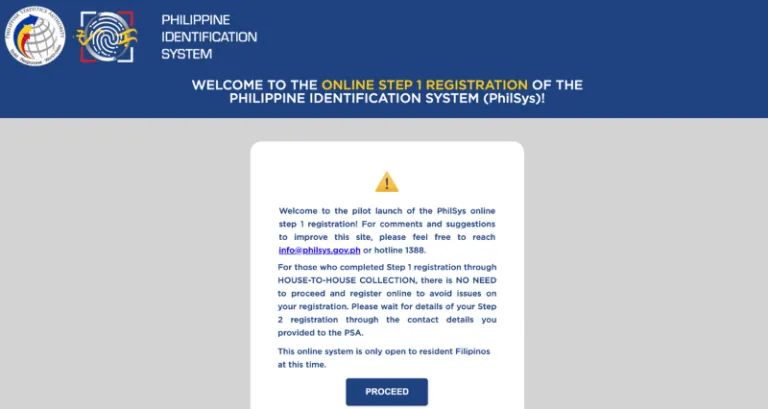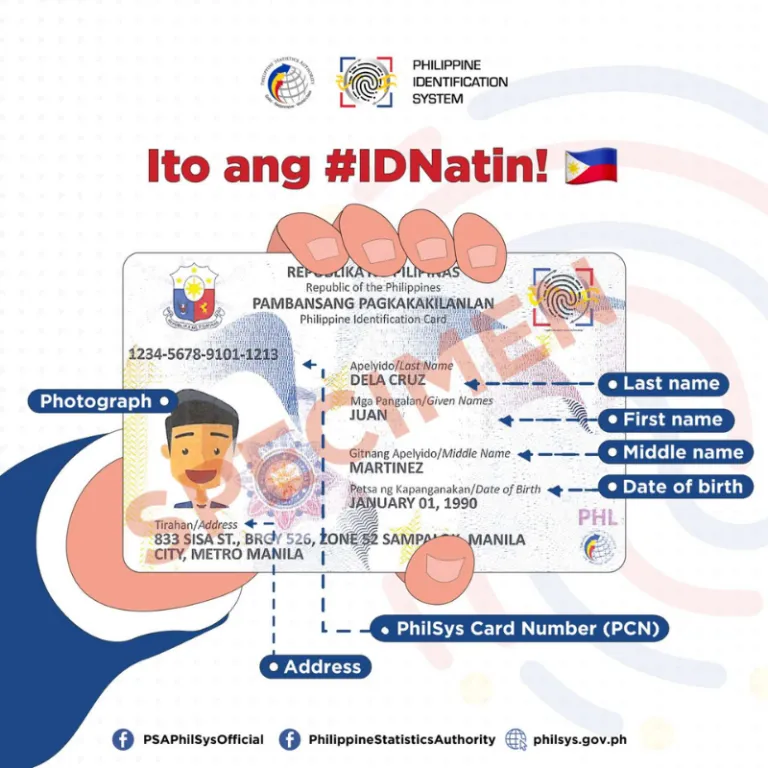The promise of new flavours beckons from Banawe.
Philippine National ID Registration Process & Requirements

Ever tried registering for a bank account only to end up leaving empty-handed? I’ve been there. It turns out that countless Pinoys go through the same problem, either because they don’t carry around multiple valid IDs or they have none at all. Due to issues like this, the Philippine government has started putting together the Philippine Identification System (PhilSys); the system will grant Filipino citizens and non-Filipino residents of the country a Philippine National ID (PhilID).
As of 17 Apr 2021, over 30 million Filipinos have already accomplished the first step to registering for the Philippine National ID. PhilSys aims to register at least 70 million individuals by the end of 2021. In order to help reach this goal, they introduced online registration on 30 Apr 2021.
Why apply for a Philippine national ID?
According to the Philippine Statistics Authority (PSA), “The PhilID is a foundational ID which serves as a valid proof of identity which would help ease transactions with both government and private sector through easier validation and authentication of identity.” (In other words, the goal is to do away with the need to present other valid forms of identification.)
It will ease both private and government-related transactions
The PhilID will serve as a valid ID for both Filipinos and non-Filipinos residing in the Philippines, and will officially consolidate other previously issued government IDs. These include SSS, PAG-IBIG, PhilHealth, passport, voter’s registration, TIN, and driver’s license numbers.
PhilID registration is free
Registration for the Philippine National ID will be completely free of charge. Fees will only apply for replacement due to damage or loss; however, fees will be waived for holders of a Certificate of Indigency, so long as they can present their certificates.
For Filipino cardholders, the PhilID has no expiration date
Yes, you read that right — Filipinos will enjoy lifelong validity once registered for the Philippine National ID. For resident aliens, on the other hand, validity will only last for one year.
For both cases, the PhilID is permanent. Each individual will be assigned a 12-digit PhilSys number or personal serial number (PSN) and a 16-digit PhilSys card number (PCN).
How to register for the Philippine National ID

According to the PSA, Philippine National ID registration just takes three simple steps.
Step one: Collection of demographic information
As of 30 Apr 2021, resident Filipinos may accomplish step one online. (However, at the time of writing, the system is still undergoing technical difficulties.)
The following information will be asked of you:
- Name
- Sex
- Date of birth
- Place of birth
- Blood type
- Address
- Optional information: Marital status, cellphone number, email address
After submitting your information, you may set an appointment for step two at the registration centre closest to you.
Note: For those who have already completed the first step through house-to-house collection, there is no need to register online. Please wait for details for step two to be sent to you via the contact details you provided.
Step two: Capturing of biometric information
This step must be done in person. Don’t forget to bring a copy of your transaction number and the necessary supporting documents:
- PSA-issued birth certificate
- One government-issued ID which bears your full name, front-facing photograph,and signature or thumbprint
The following biometric information will be captured:
- Fingerprint
- Iris scan
- Front-facing photograph
- Validation of supporting documents
Step three: Issuance of PhilSys Number (PSN) and PhilID

Your PhilID will be delivered straight to your doorstep via PHLPost. PhilSys reminds everyone not to post photos of their IDs on social media upon receiving them, as they contain personal information.
Also read: Philippine Postal ID: Why You Should Get One & How to Apply [UPDATED 2021]
While it will certainly take time before the Philippine National ID system is fully implemented, we highly encourage you to register for yours as soon as possible. For updates and more information, visit the PSA Philippine Identification System’s official Facebook page.
Featured image credit: Philippine News Agency | Official Website
Published at
About Author
Gabriella Salud
Subscribe our Newsletter
Get our weekly tips and travel news!
Recommended Articles
10 Best Banawe Restaurants for a Mouthwatering Food Trip in QC 10 Commandments for Responsible Travel Flexing Spread the good word!
10 Long Weekends in the Philippines in 2023 Book those flights ASAP.
Top 10 Post-Breakup Destinations for Healing and Self-Rediscovery Ready for a solo travel?
10 Tips for Planning Out-of-Town Trips During Typhoon Season Stay safe and travel well during the rainy season.
Latest Articles
Legoland Shanghai Opening in 2025: What to Expect New theme park alert in China
Pahiyas Festival 2025: A Vibrant Celebration in Lucban Quezon Pahiyas is back and brighter than ever!
Top 10 Family-Friendly Things to Do in Europe Unmissable experiences for all ages
Scoot’s Direct Flights from Singapore to Iloilo Are Finally Here — Here’s What You Need to Know Fly direct from Singapore to Iloilo with Scoot!
Cheung Chau Bun Festival 2025: Where to Go, What to Do, and How to Join Experience the thrill of the Cheung Chau Bun Festival 2025


